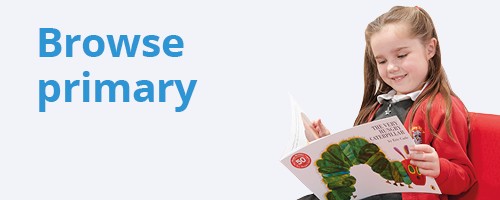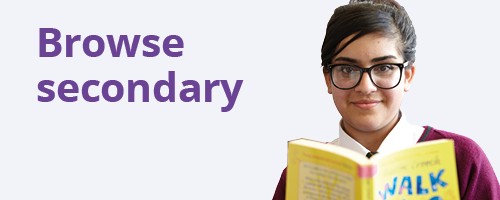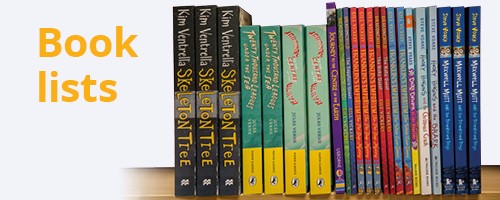Schools please note: due to the summer holidays we will automatically hold all school books and furniture orders due between Wednesday 16 July and Monday 1 September 2025. Delivery will resume from Tuesday 2 September 2025. If your school remains open for deliveries during the summer and you would like to receive your order during this time, please get in touch in advance by calling 0121 666 6646 or emailing hello@peters.co.uk.
For help, advice and telephone ordering call our team on 0121 666 6646
Are you sure you wish to delete this basket?()
This action cannot be undone.
Sorry, something went wrong
Please report the problem here.
The Sad Ghost Club - Q&A with Lize Meddings

February 2nd 2021
Q: You created The Sad Ghost Club as a project to help spread positive awareness of mental health. Can you tell us about the process of creating the project and then turning it into a graphic novel?
I made the first comics in 2014 without really thinking about what ‘mental health awareness’ meant, I was just struggling myself and making the comics was one thing that seemed to help calm my brain down. After a couple of months of them being online a friend got in touch to tell me how much it had helped her when she was having a hard time after moving away. We shared a heartwarming conversation about how nice it felt to know someone felt the same, and she loved the way I was just describing my own journey but how relevant that felt to her, and others. After that conversation something switched in my head and the focus shifted, it wasn’t just me making self-indulgent comics, I could make it a little bigger than that. Turning it into a graphic novel was, as corny as it sounds, a dream come true. As the club was born from me making comics, the chance to tell a long story was something I’d always had in the back of my mind. The process was mostly just me trusting myself, if people liked the short versions I posted online, I just had to trust that they would like a longer version. Luckily the comics I make all stem from the same ideas and character. It’s usually a ghost, it’s usually in nature, and they’re usually thinking about something! Creating the actual character was the hardest, because the ghost from the comics is a blank slate, but I’m really happy with how the character has turned out, and I think it’s the same ghost from those comics back in 2014, just with a little more personality.
Mostly the thought process was the same as the comics you see on Instagram, I thought about what I wanted it to say, and broke that down into sections, and matched it up with what the visuals could be. I just had a LOT more room to play with for the novel :)
Q: One of the themes of the novel is around finding your community. In the last year, we’ve been in and out of lockdowns and had many restrictions on seeing people in person. Has that changed your idea of community and what a finding a community looks like?
Lockdown has been hard. Really hard. I gave up my studio that I used to share with 5 people because of all the uncertainty, and working solitarily from home has been a struggle. But it has definitely taught me some things about support/community and friendship. I think the biggest thing is what a useful tool social media is. And social media is hard, and can make you feel worse than you already did, but using it as a way to keep in touch and pretty much only that, has been really helpful for me. I find when I feel like I don’t want to talk to anyone, is when I need to the most. So I try my best to push through that resistance and just send my friends some memes, or a dumb video so I can feel a little bit of connection. Lockdown has also forced me to trust my friendships and relationships, even if I don’t speak to someone for weeks, I have to trust that they’re still there, and still care, and eventually when we do get the timing right and have a chat, it’s exactly the same as it’s always been. My SGC community has always been online, so the lockdowns haven’t affected that too much, and in some ways it’s been nice having one big thing to share with everyone. We all know what it’s like to live in such an uncertain time, and we can all share in that struggle.
Q: How can you create community in lockdown? Do books and art help?
Art and books definitely help, especially if you are able to share that with your friends, mutual friends on instagram or what have you. Having something specific to talk about and share has been a real life line. I’d like to pretend it’s art and books for me but honestly it’s been playing Animal Crossing hah! Being able to laugh at the same memes (it seems like memes really saved me during this lockdown huh!) and share a connection without it feeling like a lot of effort is what stops me from feeling isolated. Aside from video games my favourite lockdown hobby has been punch-needle embroidery. I got started a few months ago and if I’m ever feeling bored/restless or a little lonely, it always goes away once I start creating something, and finishing something is even better. If you want to start a new hobby I really recommend having a little search on social media for whatever it is you want to create, follow a load of people already doing it, maybe join some facebook groups and don’t be scared to introduce yourself. I love sharing snaps of whatever I’m making in hopes it’ll lead to a little conversation about it.
Q: Both of the main characters in your book struggle with their mental health in different ways. What advice would you give to somebody that is struggling with their mental health at the moment?
The best advice is to reach out, but that can be so much easier said than done, and for some may even feel completely impossible. Talking to someone you trust isn’t going to suddenly make you feel completely fine, but it may help a little, and sometimes you need someone to confirm that what you’re going through, sucks. Try your best to do the things that get you through, and don’t worry about what that is. If you need to play animal crossing for 8 hours to get through the day, do it, there is ALWAYS tomorrow. Small tasks can help shift a mindset, even if it’s just finishing the washing up. The days can feel excruciatingly long, but hobbies can really help with that. Try and seek out connections where you can, even if it’s just sharing dumb memes with a friend. There are people that care, even if your brain is telling you there aren’t.
Q: What are the key messages you hope people take away from your book? Why do you think a book like this is necessary?
I think the key message I want people to take away is that we’re not as alone as we feel. That feels like the most obvious one but it’s honestly something that took me years to learn. I thought I was the only person in the world feeling overwhelmed and anxious, and just knowing that it’s kinda normal to feel that way sometimes really helps when I have those bad days. I also hope it leaves people feeling that those thoughts maybe aren’t as big as they seem. As Socks says in the book ‘just because it feels huge now, doesn’t mean it will forever’. Our brains lie to us and they make things feel so much bigger than they really are, and once you’re able to notice that yourself, and take a minute to think ‘will this feel as important tomorrow?’ and let the negative thoughts pass, you may feel a little more in control.
Q: What is your process for addressing serious themes in art?
Oof, tricky one. I say tricky because it’s something I try not to overthink. The first comics I made were about my own experience so it didn’t really feel like ‘addressing a serious topic’ and more just sharing my own feelings. Since then I’ve tried to keep empathy and kindness at the heart. I try and put myself in people’s shoes and create work that I would be happy with, if I was experiencing what I’m talking about. I try my best to use positive language (I just did it there, TRY my best) because a lot of the time we don’t want to be told explicitly what to do or what will help, it’s a lot kinder to be gently nudged and I think that’s important when talking about Mental Health in general. Sometimes the ‘easy fix’ is still impossible, and talking about it as if it isn’t can make someone feel even more isolated and misunderstood.
Q: What are you working on next?
Well I am actually working on the second installment in The Sad Ghost Club story! Which is very exciting, alongside that I’m enjoying making bonus comics and content from the book and exploring the characters even more :)
The Sad Ghost Club graphic novel is out now.









